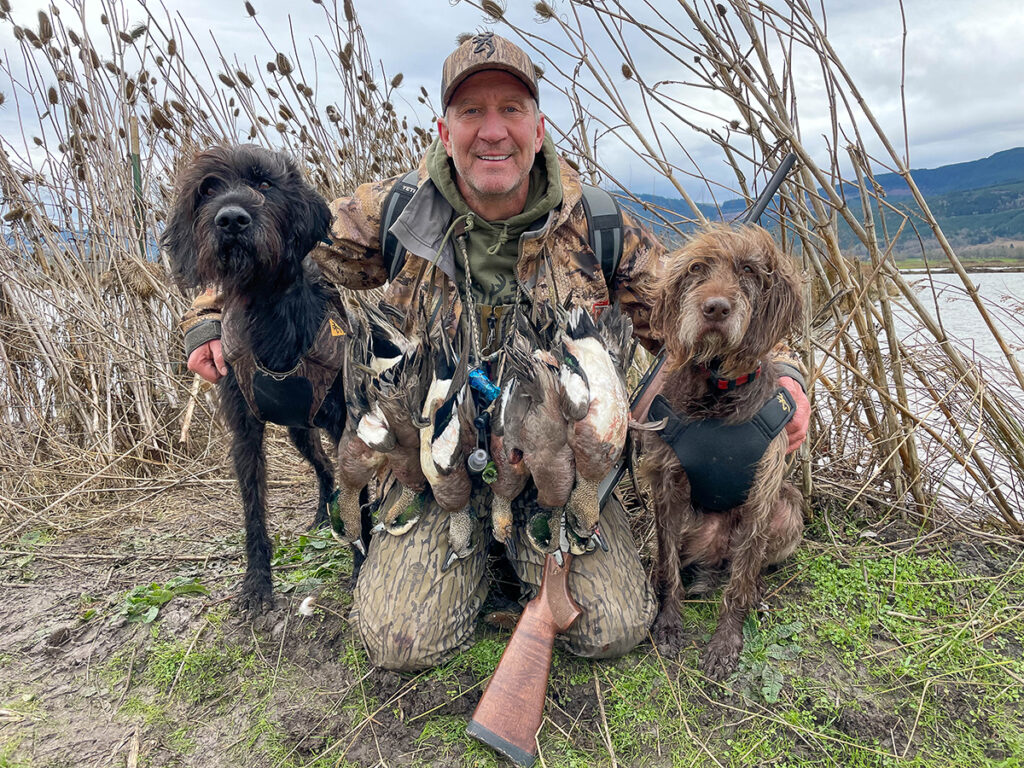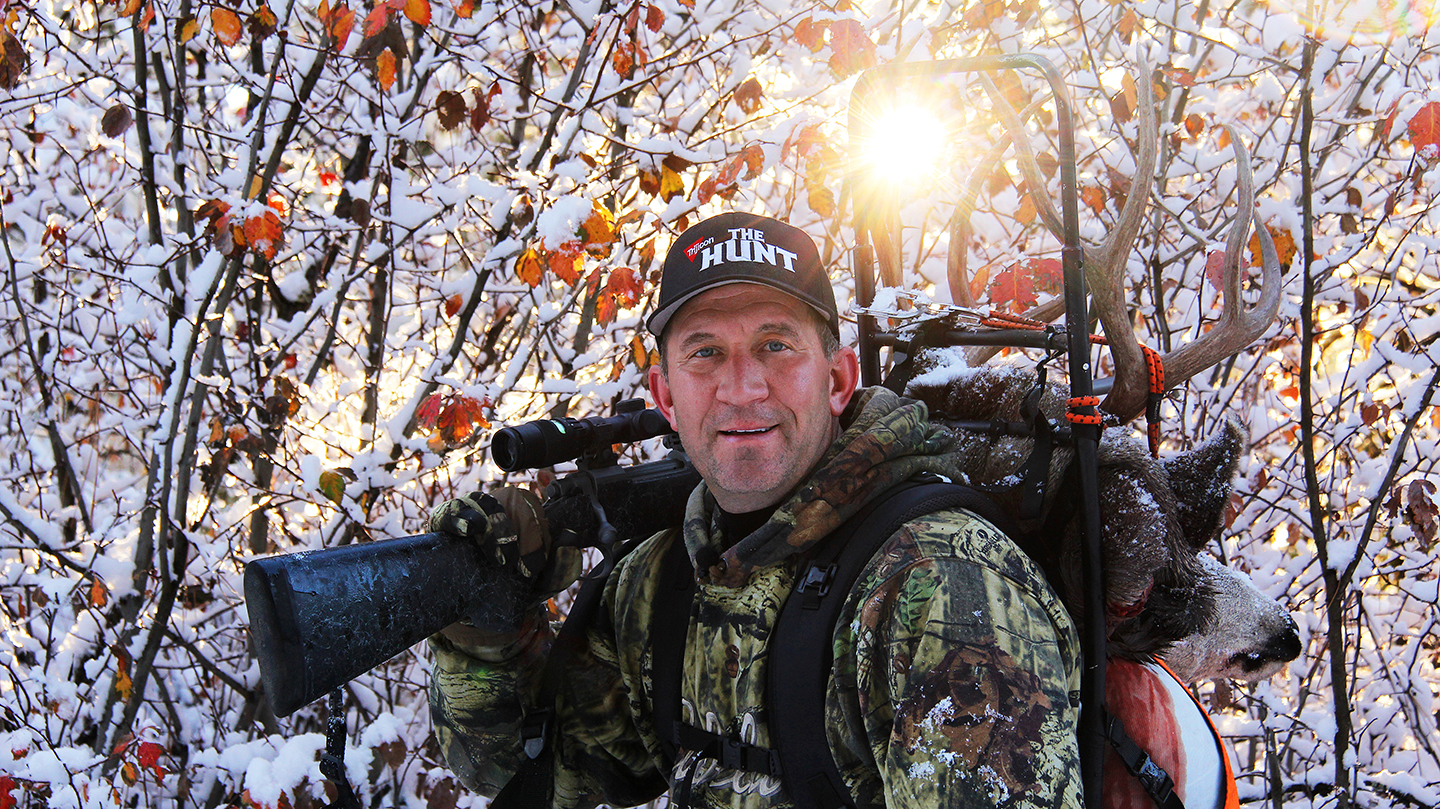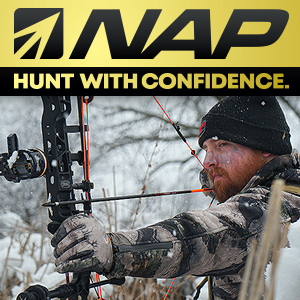It’s easy to get stagnant with your duck spread — doing the same thing, hunt after hunt. However, your duck spread should be ever-evolving if you want to fill limits regularly. Here’s how a veteran duck guru adjusts throughout the season.
by Scott Haugen
I start posting duck-hunting pictures on social media this time of year. The intent is to share and motivate fellow hunters to get out and enjoy what we have available. I receive a lot of questions from fellow hunters, asking what my favorite decoy is.
The first time I fielded this question, I just about wrote back with a one-word reply. I assumed they were asking about the latest post I’d made with my dog and me with a limit of ducks in a spread of silhouette wigeon decoys. Then I got to thinking and needed more details from the man.
I asked if he was talking about late or early-season decoys. If he wanted to know about standing fakes or floaters, silhouettes or jerk cord setups. I was also curious if he was hunting public or private land, and what species of ducks he was targeting. My wheels were spinning for days about how my decoy spreads continually evolve with the season.
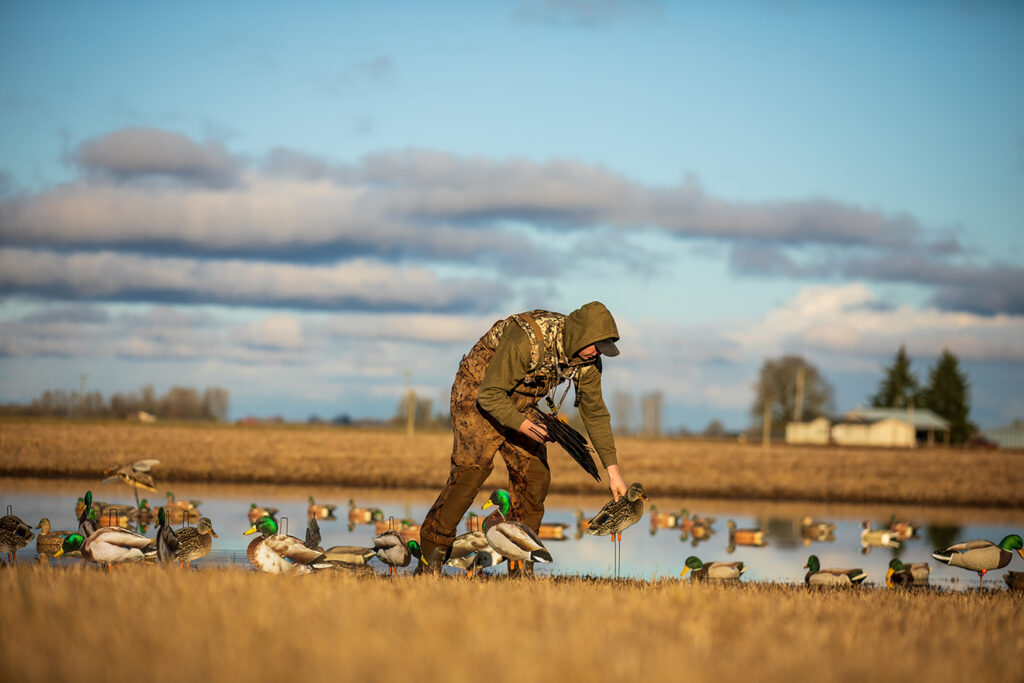
Adjust With The Season
It comes down to me having more than one overall favorite decoy. Still, I do have preferred decoys at certain times of the season, under specific weather conditions, when particular duck species are in my hunting area.
I’ve hunted in multiple states this season. While many states are struggling, my home state of Oregon is in duck heaven, and we have been for the past three seasons.
In Oregon, I hunted opening weekend with four teal decoys, one on a jerk cord. There was little water, and the only birds I’d been seeing while scouting were teal. I shot some green-wing teal from what a few small groups dropped into the decoys that morning.
Then I went on the road but returned home a few weeks later, hunting my opening day spot. There was more water, and trail camera videos revealed plenty of ducks. I set out a dozen of the ugliest duck decoys I had in a mix of sizes, shapes, brands, and colors, and I also set two WindWhackers. I ran four mallard decoys on a Motion Ducks Decoy Spreader System jerk cord to create water movement. This is something I use all season long. Later in the season, I’ll add the seven-bird jerk cord to the other side of my spread from where the four moving decoys are to create even more movement on the water. Both my dad and I shot limits of ducks that day. For the next 26 of 27 times, we hunted this spot during the remainder of the season, we limited. I’m confident our evolving decoy spread had a lot to do with it.
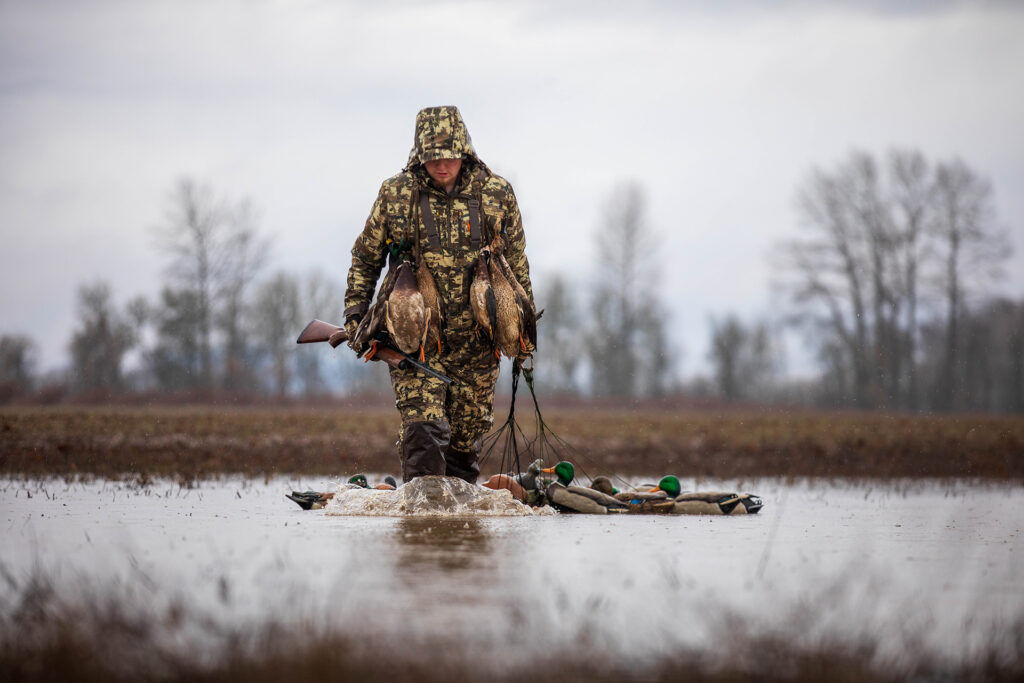
New Looks
Early in the season, I like a mix of duck decoys in odd shapes and colors, just as you see in the wild when mixes of local birds dominate, many having hatched at different times based on size and plumage development. I even paint a few decoys black, for contrast.
After Thanksgiving, we got a big push of ducks from the North, mainly wigeons and pintails. That’s when I swapped out the ugly decoys with well-painted ones. I also added a dozen pintail decoys and seven more on a second jerk cord. Over the next three weeks, there wasn’t a morning where hundreds of birds weren’t dropping into the decoys.
More wigeon showed up when the pintails moved south, as did mallards and lots of green-winged teal. This is a typical theme year after year. That’s when I broke out the silhouette decoys, five dozen Big Al’s Wigeon Silhouettes, to be exact. Big Al’s silhouette duck decoys are made in the U.S.A. I’m a fan of their exceptional photo quality and the fact they keep their color and don’t give off unnatural glare.
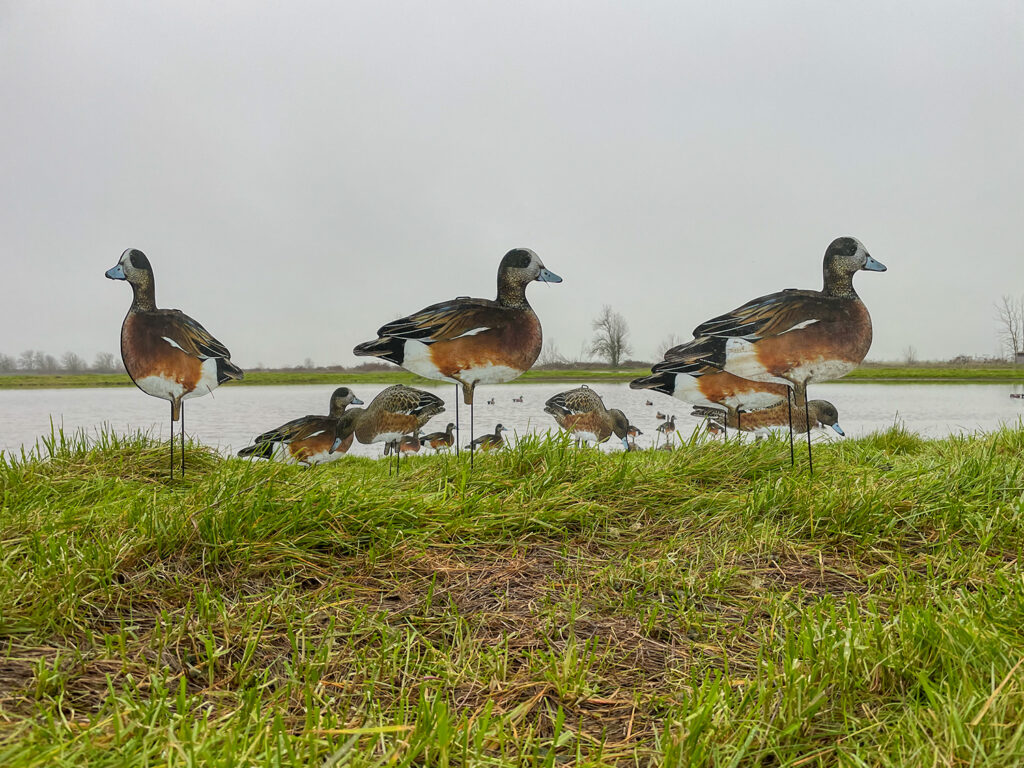
I also added two life-size floating honker decoys to the duck spread and six Final Approach Full Body Honkers on an exposed strip of land; that’s also where I situated the wigeon silhouettes. I tossed out a dozen Final Approach Live Floating Wigeon decoys near the floating goose decoys. These wigeon decoys are remarkable. The paint jobs are incredible and anatomically, they are the most accurate wigeon decoys I’ve seen. Those big drake heads pop up from a distance and look fantastic. Finally, I plopped a pair of the Final Approach Live Canada Goose Butts in with the wigeon floaters as I often see wigeon gathering near feeding honkers, picking up scraps the big birds drop.
Silhouette Sets
When grazing on green grass, wigeons are in a tight ball. That’s how I set my Big Al’s silhouettes. I often put them at 45- or 90-degree angles to one another, not just side by side or all facing one direction. While flocks routinely feed into the wind, changes or lulls in the wind direction can find wigeon facing any direction. Setting three or four silhouettes within a foot of one another and at various angles gives an approaching flock of wigeon the illusion that birds are on the move and feeding, quickly attracting them.
Over the next two months, I had thousands of ducks land in the decoys, including over 700 one morning. I didn’t shoot that morning. I was looking for the Eurasian wigeon I’d been seeing while scouting. They never showed. Nonetheless, I observed that morning that 90 percent of the ducks that landed sat right next to the wigeon silhouette decoys, many on land, with the other 10 percent touching down in the gap created amid the floaters.
Stay The Course
I’m a fan of picking up the decoys daily in the areas where I regularly hunt late in the season. This is because many ducks winter here and quickly grow educated. However, we also get a lot of ducks heading back up North during the final few weeks. These birds have also been hunted a lot. Late in the season, when birds are the most wary, I create a new pattern each time I go out. I’ll even move my little one-person panel blind to different locations based on where the decoys are, which direction the wind is coming from, and how hard it’s blowing.
On last year’s final day of the season, I moved my blind three times before finally securing a limit. I couldn’t catch a break between the changing direction of the wind and the sunlight. But rather than sit and hope for the conditions to change, I relocated my blind, reset the decoys, and kept hunting. My efforts paid off.
When hunting small creeks in the area, I went to Final Approach’s Floating Mallards with flocked heads for the last month of the season versus all the plastic decoys I used earlier. Not only were the flocked decoys great in the fog and rain, but they had a beautiful depth of color on sunny days, something the mallards, wigeon, pintail, and teal couldn’t resist.
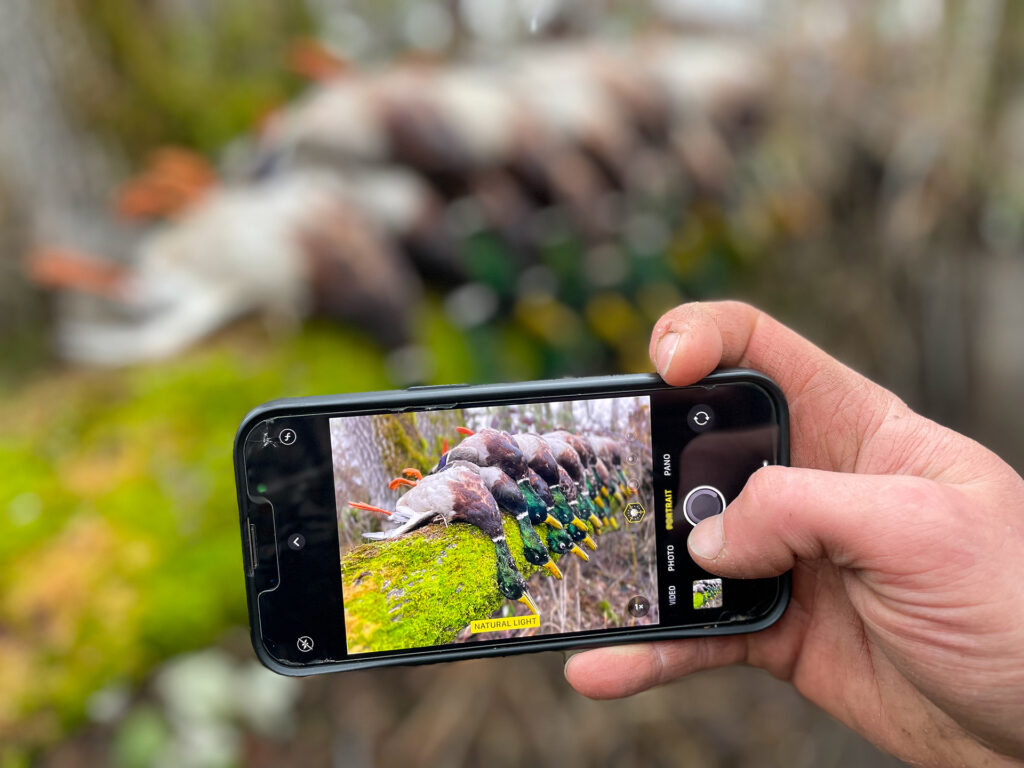
I usually remove my wing decoys from the spread about Christmas time, as the birds are wise to them because area hunters use them a lot. We can’t use motorized decoys in Oregon. That’s okay because a constant wing-flapping decoy can deter ducks this late in the game. I like the Decoy Dancer wing decoy, which I will use sparingly late in the season, especially on foggy days when birds can be especially cautious. If I break it out, it’s on clear days, and I move it just enough to capture the attention of distant birds. Then, I stop moving it as ducks approach.
Late in the season, I often find myself going light. I relocate to where birds are moving, meaning I have a lot of ground to cover. Hunting four or five different spots a week is typical. It’s scouting that determines where I go. In these situations, I’m usually happy with a dozen quality floating duck decoys, five dozen silhouettes, a superior blind, multiple calls, and my dogs.
